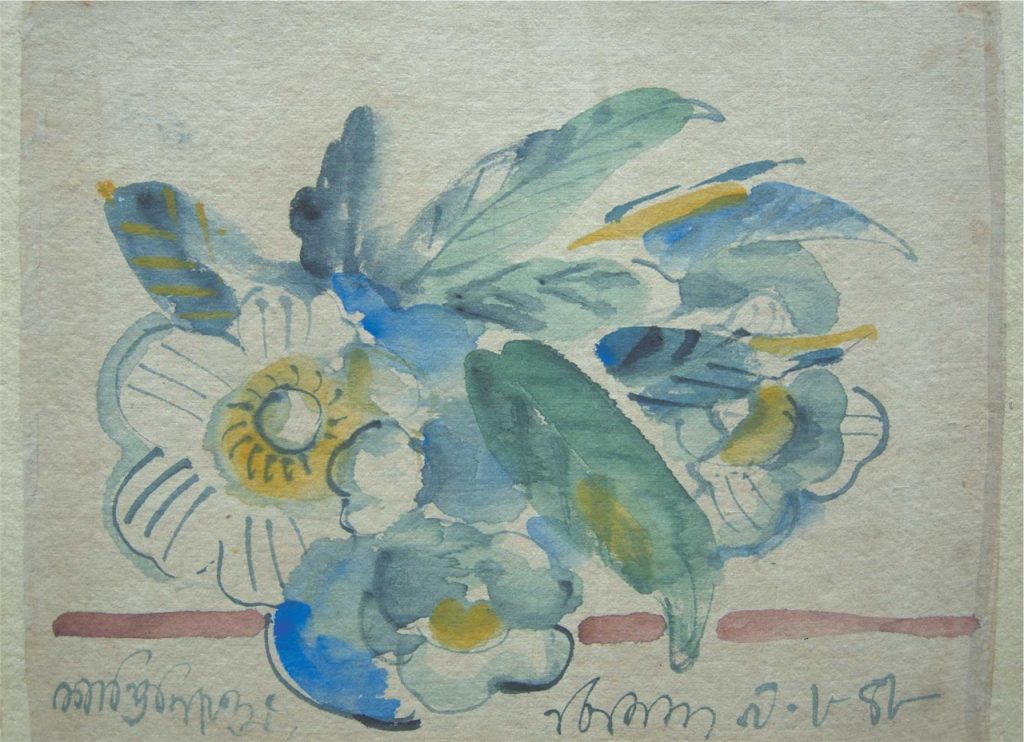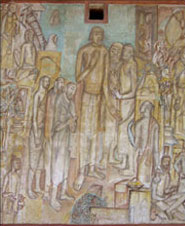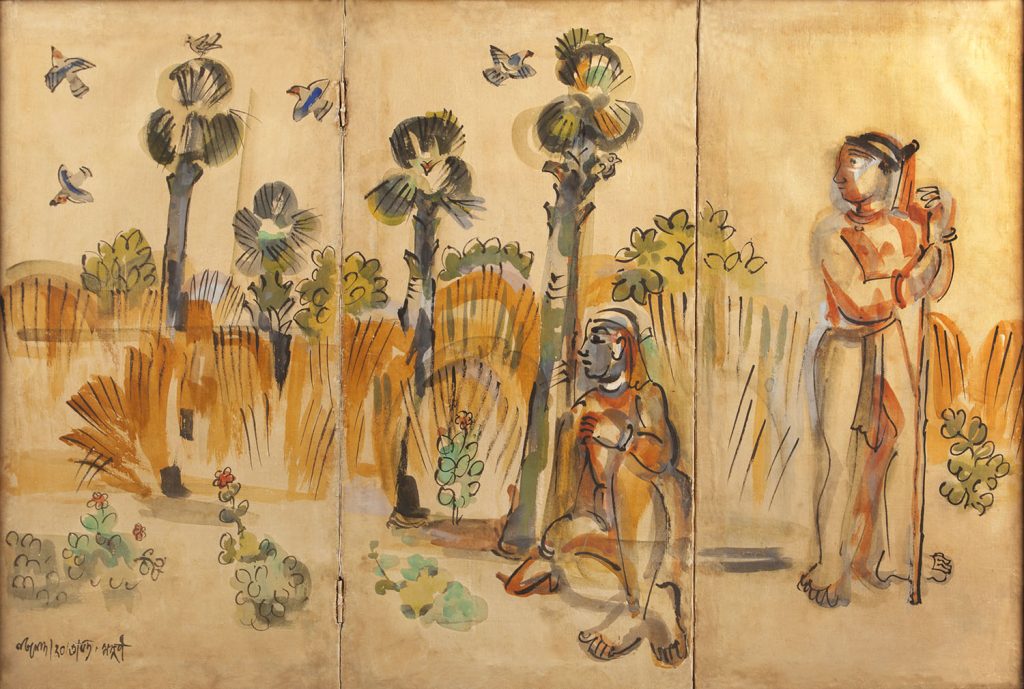The person who is not roused by a pulsating image, a small touch or sound, can make no sense of the word ‘beauty’. A person who neither knows, nor thinks beyond his worldly needs has no use for beauty.
The pioneer of Contextual Modernism, Benode Behari Mukherjee was born on 7 February 1907. He was an Indian painter and muralist. He was a student at Kala Bhavan, Visva Bharti, where he soon started to teach. He worked under the tutelage of Nandalal Bose and Ramkinkar Baij. As a professor, he guided budding artists, KG Subramanyan, Jahar Dasgupta, Beohar Rammanohar Sinha, Somnath Hore, and more.
Due to his immense and significant contribution to the field of art, he was awarded the 1974 Padma Vibhushan. Benode Behari Mukherjee passed away on 19 November 1980, aged 76.
Benode Behari Mukherjee Artworks’ Style
Benode Behari Mukherjee was a man of the world. His paintings showcase a delectable mix of Western modern art and oriental stories and narratives. Seldom, did he infuse his artwork with the predominately Asian forms of calligraphy and traditional wash techniques. The Cubist techniques of plane faceting and multi-perspective have also influenced him, and are a direct answer to the problem of space.

Mukherjee was amongst the first to experiment with murals. They soon became his favourite medium owing to their detailed and descriptive nature. His murals primarily focused on the environment and its protection.
He fervorously protested against the overuse of mythological figurines and symbols. Benod Behari Mukherjee’s artworks are quite simple to comprehend. They are exactly as depicted, though with a complex amalgamation of colours, lines, and textures. Often, the themes included nature and the infectious joy of university life.
Benode Behari Mukherjee Artworks
He was blind in one eye and myopic in the other. Despite that, he resolved to leave a mark in the realm of visual art. He continued to paint even after losing his eyesight. Although he was adept at almost all media (watercolours, silk, lithographs, tempera on wood, felt tip & more), in his later years, he graciously worked with prints, paper cuts, and sculptures.
Hindi Bhavan Mural
Benode Behari Mukherjee undertook to paint a mural on three walls of the Hindi Bhavan, Shantiniketan in 1947. This mural depicts the lives of Indian ascetics and functions as a pilgrimage to India’s past. The mural featured Saint Kabir, Tulsidas, Surdas, Guru Gobind Singh, and Ramanuja. This artwork is reminiscent of the works of Giotto and Tawaraya Sotastsu. The influences of cave painting can also be seen in it.

Village Life in Birbhum
Since childhood, he was enthralled by nature. Unlike his contemporaries, who frequently embedded subliminal political messaging in their pieces, he was lost to the majestic beauty of nature. The mural at the Kala Bhavan student hostel is evidence of this fact. The mural visualizes the Birbhum forest painted under the influence of Chinese calligraphy techniques. The mural is a linear narrative of the changing seasons.

Photo Courtesy – Get Bengal





